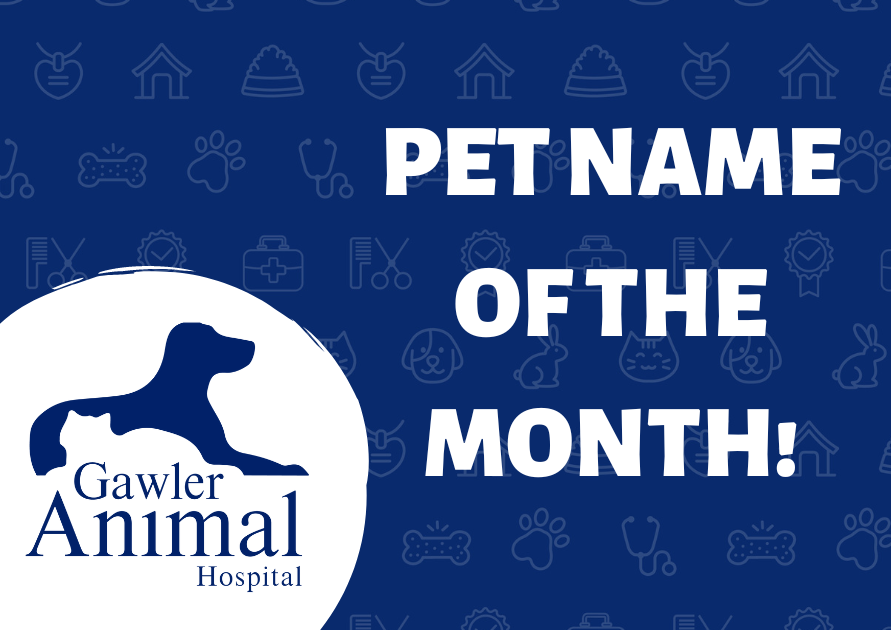 | | Pet Name of the Month | | | Thankyou everyone for voting on December's nominations, we had fantastic names come through and some tight competition between them as always.
The winner for December is ‘Sassy Socks the Cat’.Congratulations and please pop into the clinic to collect your Delicia coffee voucher.
Please hit the link below for "Pet Name of the Month January"
Pet Name of the Month - January
|
|
|
 | | Our Senior Pets and Preventative Medicine | | | Thanks to advances in veterinary medicine our pets are not only living longer, but they’re living better quality lives too. I have a great passion for providing the best quality care for our senior patients at Gawler Animal Hospital. I want to ensure that their life is as comfortable as possible. So, I thought we could reflect on some of the major issues that our senior pets face and some of the preventative measures that we, as a veterinary profession, try and implement to ensure they have the best quality of life.
It is important to remember that age itself is not a disease process. So, what is considered old/senior? For dogs, we used to believe that 1 dog year was equivalent to 7 human years; this theory has since been debunked, since it did not take into consideration the different breeds of dogs. For example, a small-breed dog will likely live longer than a larger-breed dog. Because of this, a newer and more generalised approach is to categorise all dogs older than 7-years-old as ‘senior’. For cats, we have 3 groups of cats; mature (7-10 yrs.); senior cats (11-14 yrs.) and geriatric (15+ yrs.).
Getting older is a natural and gradual process which, like in humans, predisposes our pets to certain health issues. Hence, a lot of our attention in our older/senior population is picking up these issues before they become a problem. This is where our preventative medicine comes into play.
The 6 monthly health checks
Once your pet is in the “senior category”, we recommend switching from yearly to 6-monthly health checks. This might seem quite frequent, especially if your pet appears to be healthy from the outside, however, as mentioned above pets to age more quickly than humans. Additionally, our pets are very stoic and sometimes do not show signs of being unwell until the very end. Hence, with the increased frequency of health checks, we aim to pick up diseases sooner, with the hope that we can intervene quicker and have a better outcome. The 6-monthly health check provides a great opportunity to discuss how your pet is going and to address any concerns you may have. Your vet will perform a full physical examination which is sometimes accompanied by the following diagnostic tests; blood pressure measurements; a more extensive ophthalmoscope (eye) exam; a senior wellness blood test; and a urine test. Not all these tests are required in each case and will be tailored according to your pet’s needs.
Common senior issues
Some of the key health issues we are likely to focus on, in senior patients, include the following: (We also have a range of information sheets on our website regarding some of these health issues which can be found in the library section - so please feel free to check these out!!)
Dental disease
• Dental disease is one of the most common issues affecting our companion animals, even from very early on in life.
• It is often overlooked and possibly missed by many owners but it can cause great morbidity in our elderly patients. Watching your pet eat at home is one of the things you can actively do to pick up dental disease early.
• If you notice any changes in their eating behaviour - such as, they drop their food, eat on one side, eat more slowly or show less interest in a particular type of food - it could indicate dental disease.
• If dental disease is noted by your veterinarian, then they will recommend a COHAR (complete oral health assessment with radiographs under a full general anaesthetic). Many owners are understandably hesitant with general anaesthetics; however, it is vitally important that dental disease is addressed and managed promptly as it can lead to other several significant health issues.
Osteoarthritis
• Arthritis is a condition where inflammation within affected joints causes progressive damage, leading to irreversible cartilage and bone deterioration. It affects many of our elderly patients and can be a painful and debilitating disease.
• There are subtle signs you may notice at home which could indicate that your pet is suffering from arthritis including behaviours such as;
o being slow and stiff to rise,
o becoming less interactive with other pets or people at home,
o reluctant to jump up onto or off of things,
o not wanting to go for walks,
o not wanting to play anymore,
o become lame or they may cry when being picked up.
• Unfortunately, we cannot cure our pets from arthritis, however we can treat and slow down its progression
• We use what’s called a “multi-modal” approach which basically means that there may be multiple supportive measures implemented to treat and manage the condition. Some of these may include:
o Weight loss
Which will place less strain on the joints and muscles
o Physical therapy
Gentle regular exercise like walking or hydrotherapy
Physiotherapy sessions may be beneficial for some pets
o Medications
Anti-inflammatory medications are the most commonly prescribed, which reduce inflammation within the joint and provide your pet with pain relief
Again, we use a muti-modal approach with medications. Some medications work more effectively when combined with another medication
o Nutraceuticals
These encompass supplements that act directly at the joint to reduce inflammation and most importantly try to slow down cartilage degradation. There are many on the market but here are a few we recommend:
• Omega 3 and Omega 6 oils
• Chondroitin
• Glycosaminoglycans
• Pentosan polysulphate (zydax injections)
o These are given at the clinic. Your pet will receive 1 injection every week for 4 treatments, then normally they receive a booster every 6 months.
o These can be given more frequently if required
• 4cyte
• Glyde
o Other things
Ramps –to help get into/out of cars particularly for large breed dogs
Comfortable bedding
Avoid them jumping onto/off of couches or assisting them with this
Cognitive Dysfunction Syndrome (“dementia”)
• It is a progressive, debilitating condition that resembles closely to Alzheimer’s disease and senile dementia in humans’
• It is a relatively new area of research in veterinary medicine
• It can have a significant impact not only on the pet, but for those caring for these patients
• Some of the signs you may notice include:
o Spatial disorientation (unaware of their surroundings)
Staring at walls, looking blankly into space
o Lack of interest in playing
o Disrupted sleep cycles/sleeping more than normal
o Loss of learned behaviours
Urinating/defecating inside
o Vocalisation (particularly in the middle of the night)
o Change in interest in food/water (increased/decreased)
o Decreased grooming (cats)
o Changes in general behaviour (increased anxiety, decreased responsiveness)
o Aimless wandering, pacing
• Some of the signs above may not all be attributed to dementia, so your vet will likely investigate further to determine what is going on
• Unfortunately, we cannot cure this condition but we can reduce the clinical signs with environmental modification and medications (which can improve brain function).
• Your vet will discuss these options with you as they have to be individualised to the patient.
Nutrition
As our pets age, so do their nutritional requirements. The main goal in feeding our senior pets is to promote longevity whilst keeping a healthy body condition (weight).
In regards to nutrition, there is not a ‘one size fits all’ solution, so a feeding plan (diet, amount etc) has to be tailored according to your pet’s needs. Ultimately, the most important goal is to ensure they’re getting a balanced diet and they’re fed the correct amount to maintain an ideal body condition score.
Loss in vision/hearing loss
Vision deficits and hearing loss can be a slow degenerative disease that affects many of our senior patients. As they can be slow to develop, they can be missed by many owners.
Some of the signs you may notice at home include;
• having issues seeing at night time,
• walking into objects,
• being unaware of their surroundings or
• They can no longer hear their name being called.
Preventatives including vaccination, worming, heartworm and flea treatment
From the minute your pet comes in for its first kitten or puppy vaccinations, they are prevented against easily transmissible diseases through vaccinations and worming. It is important that we continue these preventative measures as they age, to ensure we keep them as healthy as possible.
If you are concerned about any of the above conditions, it’s important that you seek advice from your veterinary professional. Each patient’s condition will be evaluated and a treatment plan for your pet will be individualised and tailored to their specific needs.
Gawler Animal Hospital will likely send you out a senior questionnaire before your appointment. It is very useful if you can fill this out in advance, so that we can better prepare for your appointment and better accommodate your pet’s individual needs. I look forward to seeing you and your furry beloveds.
Dr Luisa Panetta
|
|
|
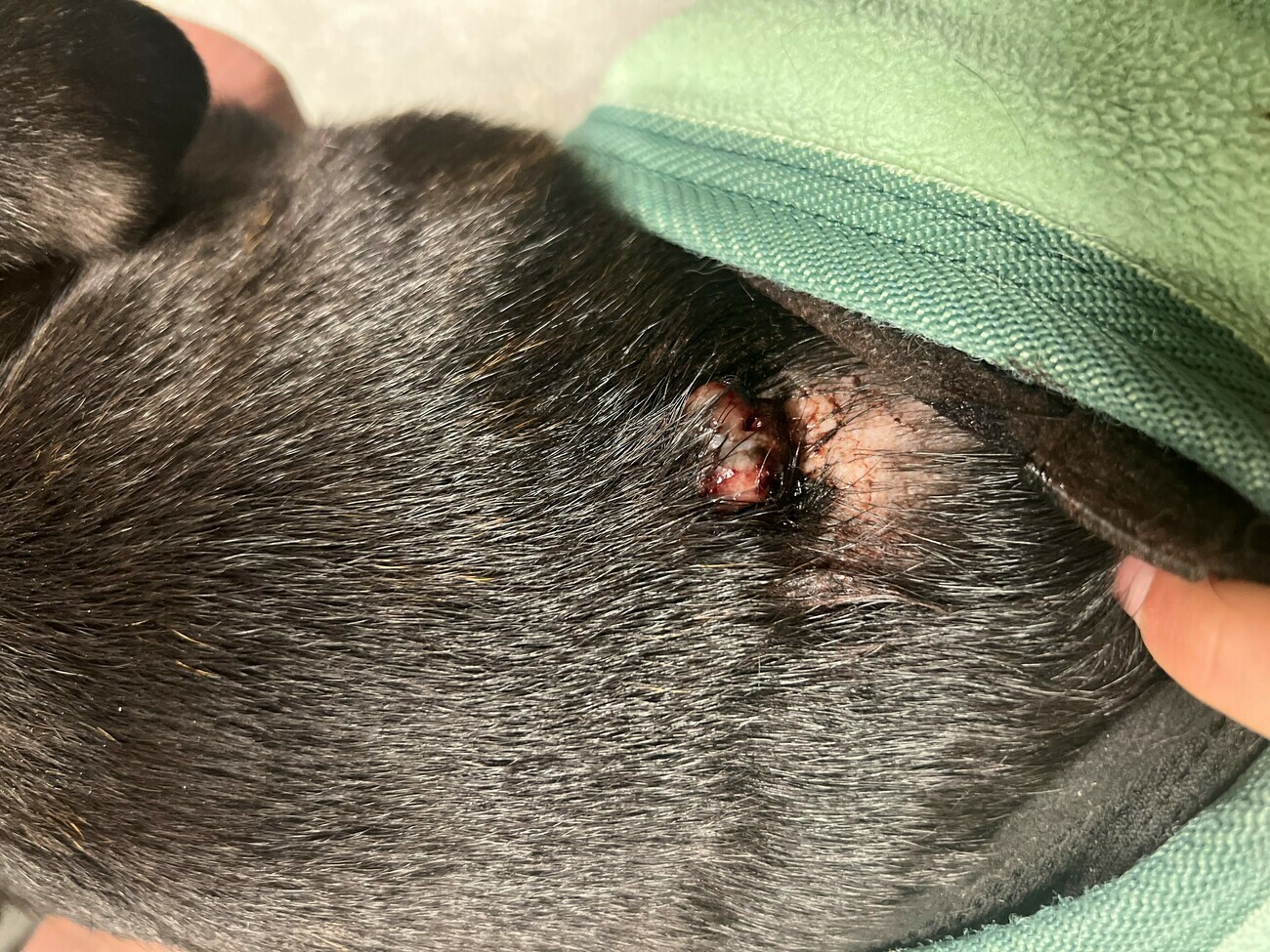 | | Optimistic oncology | | | It’s natural to feel a little worried if you find an unusual lump on your pet.
Our team are here to reassure you that with prompt treatment, there’s a good chance of a positive outcome for your pet. Here are two potential ways we could achieve a good result:
1. Not every lump is nasty
As well as malignant (cancerous) tumours, there are many other causes of lumps in pets that are less of a cause for concern. These include:
- Benign tumours – these are tumours that are unlikely to spread and cause harm in your pet’s body, including lipomas (“fatty lumps”), histiocytomas and benign sebaceous tumours (“old dog warts”)
- Skin tags – these are small skin growths that are thought to be associated with persistent irritation or pressure
- Cysts – these hollow swellings may contain fluid or thick, cheesy material
- Papillomas – these are wart-like lumps caused by dog papillomavirus
Whilst these masses are all considered benign, they may be associated with irritation or discomfort in some pets and therefore may still require surgical removal.
Swelling on or beneath the skin of pets may also be caused by inflammation or infection. Common causes for these types of swelling include:
- Hives – these are allergic skin swellings that can occur after insect stings or contact with an irritating plant
- Abscesses – these are pockets of infection that often occur secondary to tooth root infections or a cat bite, or due to a penetrating foreign body such as a grass seed
2. Prompt treatment can be curative
If testing of your pet’s mass does confirm a cancerous lump, there is still a good chance of cure with prompt treatment. In most cases, this includes surgical removal of the mass.
So, if you find a new lump on your pet, keep calm and book a consultation. We’ll help bump off that lump in no time!
|
|
|
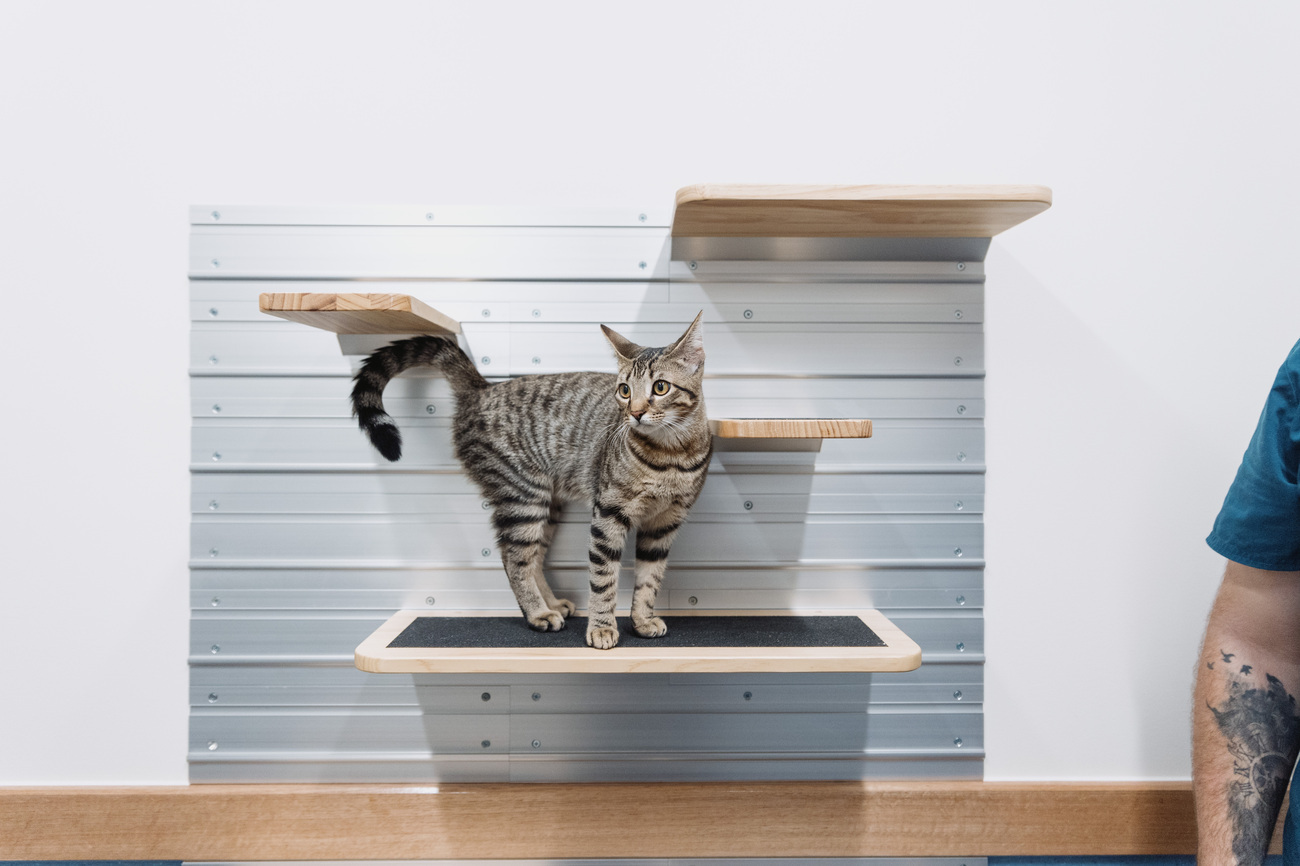 | | Kitty kidney kindness | | | Chronic kidney disease (or CKD) is particularly common in elderly cats, and involves a progressive deterioration in kidney function. Whilst early CKD rarely causes any obvious signs in affected cats, cats with more advanced disease can show symptoms of unwellness, including weight loss, reduced appetite, poor coat quality, and increased drinking and urination. CKD can also predispose them to secondary health problems, such as urinary tract infections or high blood pressure.
Whilst a diagnosis of CKD in your cat can certainly be worrying, rest assured that with early detection and management, affected cats can still have a good quality of life and may live with the disease for several years. Here’s how to proactively maximise your cat’s kidney health potential:
1. From eight years of age, book veterinary health checks for your cat every six-to-12 months
During these health checks, our vets can assess your cat’s overall body condition and musculature. Any weight loss should ideally be investigated with blood and urine tests to screen for early kidney deterioration.
2. If your cat is diagnosed with kidney disease, implementing these simple management strategies can help slow the deterioration of your pet’s kidneys and help them to feel well for longer:
- Perform a gradual switch to a prescription kidney support diet with reduced levels of protein, salt and phosphorous, which can reduce the strain on your cat’s kidneys
- Ensure your cat always stays well-hydrated by feeding them a portion of their diet as wet food and encouraging them to drink water – this may involve the use of particular bowls that your cat prefers, adding tuna juice to their water, or using special pet drinking fountains
- Have your pet‘s condition checked every six months, including urine testing (to screen for any secondary urinary tract infections) and measurement of their blood pressure
With some good care, your elderly little feline friend can hopefully enjoy several more years of good-quality snuggles with you. |
|
|
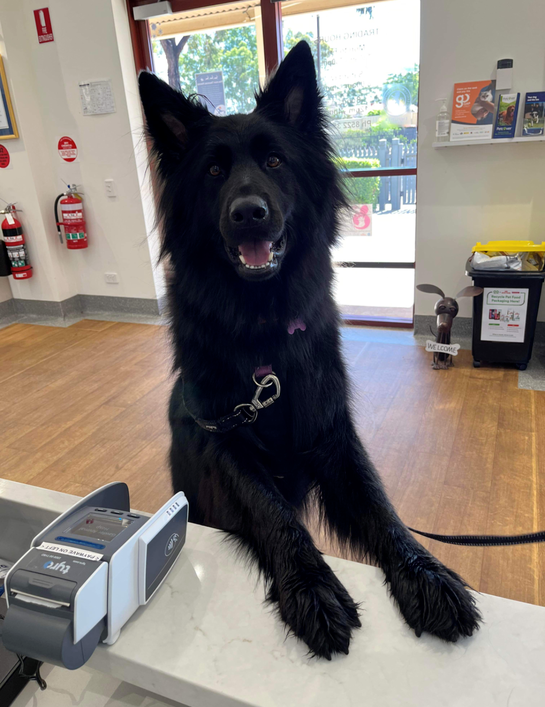 | | Keeping those hearts happy | | | Mitral valve disease (MVD) is a degenerative heart condition most commonly seen in middle-aged to older small-breed dogs. It involves the progressive thickening and dysfunction of valves within the heart, eventually leading to heart disease symptoms in some dogs.
Whilst this sounds pretty scary, the good news is that our vets can offer lots in the way of screening, monitoring and support of pets affected by MVD to help extend their lifespan and maintain their quality of life.
1. Screening pets for MVD
Many cases of MVD in pets are first discovered during routine health checks by the detection of a heart murmur (an unusual heart sound). For this reason, we recommend health checks every six-to-12 months in all dogs eight years old and above, particularly for at-risk breeds such as cavalier king charles spaniels.
2. Monitoring pets for heart disease
If a murmur suggestive of MVD has been detected, we will discuss various monitoring options based on that pet’s particular condition. These include:
- Monitoring the pet’s sleeping breathing rate – an increase above 30 breaths per minute when they’re deeply asleep (and not dreaming!) warrants a prompt veterinary recheck
- Chest x-rays to measure the size of the pet’s heart and look for any signs of fluid accumulation in or around their lungs
- Monitoring the pet for any symptoms of heart disease, such as becoming puffed with exercise
- For some pets, referral for heart ultrasound (echocardiography)
3. Treating pets for symptoms of heart disease
If pets with MVD proceed to a more advanced stage of heart disease, our vets will discuss medical options to reduce their symptoms and improve their quality of life.
Whilst we sadly can’t cure pets of heart disease, we can help protect your heart and theirs by maximising the quality and quantity of time you spend together. |
|
|
 | | Animal News In Brief | | |
Guinea pig town goes TikTok viral
Vienna will have some serious competition for the most livable city this year! A little-known and relatively new town has popped up in an unassuming backyard in Collinsvale, Tasmania. ‘GuineaVale’ is home to 37 guinea pigs. When they bought their first guinea pigs, the Ransley family simply needed a few tiny farm hands to help mow (or eat) the lawn under the orchards. “They turned out to be good lawnmowers but I fell in love with the guinea pigs, myself,” said Steve Ransley, grandfather, creator, and town planner of ‘GuineaVale’. Mr Ransley’s tiny village is complete with handmade cottages, lampposts, lounges, campground tables laden with fruit and veg, and even a miniature water tower. Videos of life in this ‘piggy paradise’ have become a social media sensation. “The grandkids said ‘You’ve gotta put ‘em on TikTok, Pop!’. They got a couple of thousand views, then 10,000, then 100,000, now they’re getting millions,” said Mr Ransley. Plans are in the works to expand GuineaVale to include a custom church and pint-sized pub. With a twinkle in his eye, Mr Ransley assures his fans that “the pub will serve, obviously, ‘Guinness’”.
Visit ABC News to see video of GuineaVale and its furry residents and view the full interview with Steve Ransley.
Pictured: Steve Ransley reclines with pet guinea pigs at 'GuineaVale'. Image source: ABC News
The pomeranian and the python
When Amanda Taylor and her three dogs headed off for a walk around Noosa Woods shortly after Christmas, she wasn’t expecting to return home as a local hero. But when a three-and-a-half metre long python set eyes (and tail) on her two-year-old pomeranian, Ferrari, Amanda was forced into action. “All of a sudden, little ‘Rari was screaming. I wasn’t sure what was happening because it was happening so quickly. The snake was coiling around his head. I just shook it and shook it until it started to uncoil. [Then] I had it in my arms, and I hurled it into the water,” said Amanda. While non-venomous, the three-and-a-half-metre coastal carpet python’s brief but powerful squeeze was strong enough to leave little Ferrari with a burst blood vessel in his eye, but no other injuries. “I was very proud of mum. Mum’s such a weapon for grabbing the snake!” said proud daughter, Jessica Taylor.
Watch the full interview with Amanda and Jessica Taylor on ABC News.
Floss of the Kimberleys
You might have heard the great Aussie yarn of the red dog of the Pilbara, but have you heard of the red dog of the Kimberley? When a truck driver opened his cab to a stray dog in Western Australia, neither of them could have known that they were in for a grand buddy adventure. What was supposed to be a straight run from Kununurra to the Perth Dog’s Refuge Home, would turn into an epic 20,000km journey around Australia. Floss and her driver Barry Horsman made it to Geraldton, WA, before unforeseen circumstances and delivery duties required Barry to make a few additional stops along the way. Together, they made deliveries to Echuca, Victoria, then up to Katherine, Mataranka and Alice Springs in the Northern Territory. Next, down to South Australia, to visit Port Augusta and Adelaide, before heading up through Ballarat, Victoria to Brisbane, Queensland, and back to South Australia again. “We didn’t have any music or air conditioning, so we just drove and drove and looked out the window, and she showed a bit of interest whenever she saw a cow,” said Mr Horsman. Four weeks later, the pair finally arrived in Perth to a warm welcome from Ruth Gourley, a longtime volunteer at the refuge home. “Everyone’s heard of the red dog of the Pilbara, [but] I would say that Floss is the red dog of the Kimberley,” said Ms Gourley.
Read more about Floss and Barry’s extraordinary adventure on ABC News.
|
|
|
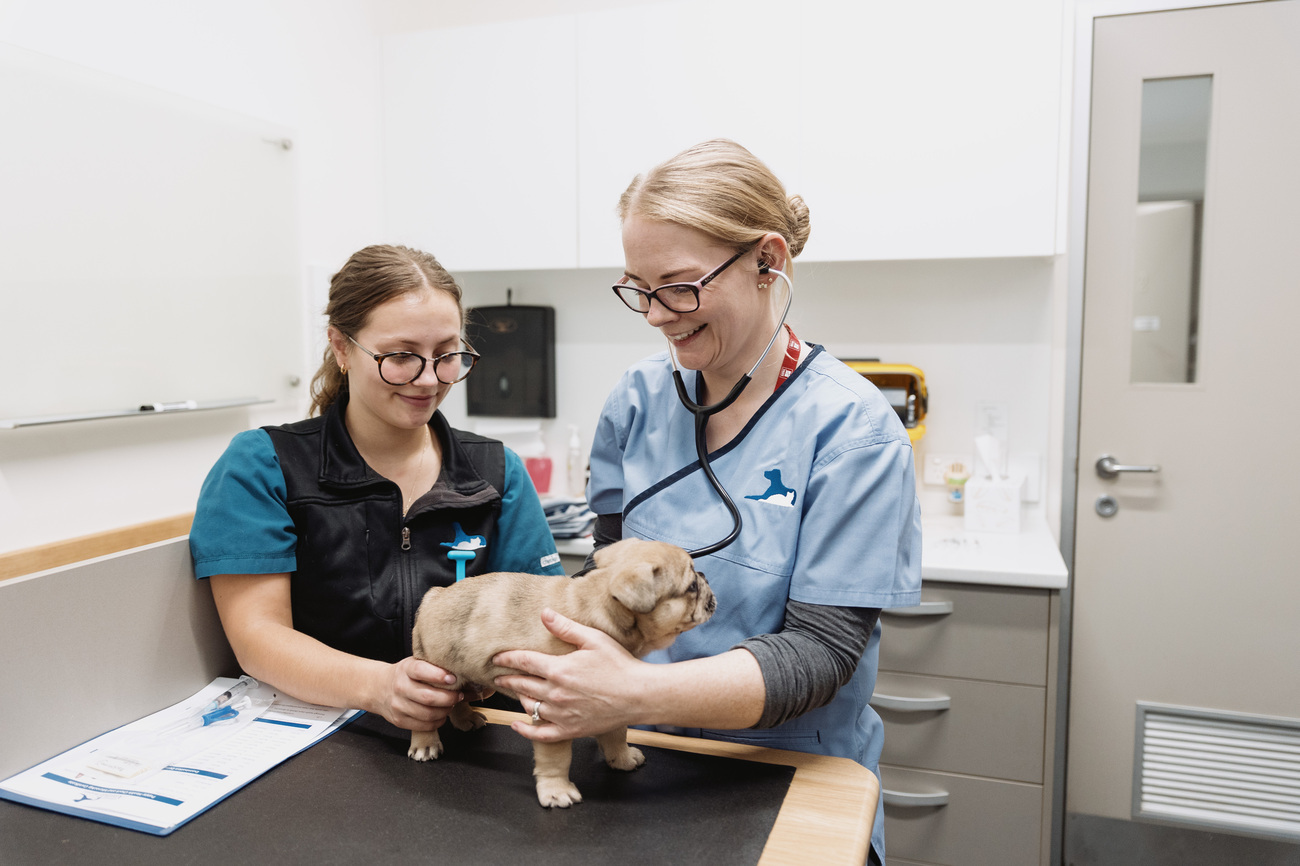 | | Taming temperamental tummies | | | Does your pet have a sensitive tummy?
Recurrent gastrointestinal upset can be a real bother for both pet and owner, with common symptoms in affected animals including runny, bloody or mucus-covered poos, increased toileting frequency, vomiting episodes, or a reduced appetite.
Whilst a diagnosis of gastrointestinal sensitivity in your pet can be a real bummer, the good news is that there’s plenty we can do to treat that tummy and keep them feeling happy and well in the long term! Depending on your pet’s individual needs, management of their sensitive gut may be achieved by:
1. Testing and treating for infectious causes
It is possible for pets to have long-term infections as the root cause of their gastrointestinal upset, such as chronic whipworm or giardia infection.
For this reason, it’s recommended to perform testing on a sample of your pet’s abnormal stools (known as faecal analysis). In some cases, we may also advise a treatment trial of anti-parasitic medications.
2. A prescription diet
Depending on your pet’s particular problem, they may do best with:
- A consistent, blander diet, avoiding richer, fattier foods or treats
- A highly digestible prescription or home-cooked diet
- A hypoallergenic diet, using either a prescription hydrolysed diet or a novel protein formulation (to avoid certain food proteins that your pet has developed an allergy to)
3. Supportive supplements
For some pets, additional supplements such as psyllium husk or pet-specific probiotics can help to keep their internal bacterial balance in check.
Chat with our vets for recommendations on safe and effective dosing.
4. Medications
For particularly troublesome IBD (inflammatory bowel disease) tummies, our vets may need to prescribe short- or long-term antibiotic or steroid medications to help control ongoing inflammation or bacterial imbalances.
Rest assured that our dedicated and knowledgeable vets will get to the bottom of your pet’s gastrointestinal sensitivity. |
|
|
 | | Return of the rhinos | | | A day in the life of an elite Malilangwe Scout begins with a patrol of the 500 sq km animal sanctuary, and careful documentation of every sighting of the black and white rhinos under their guard. Each rhino has a unique identifying pattern notched into its ear.
“In an ideal world we wouldn’t [mark] these animals, but because of the challenges we have nowadays with poaching and with the reduction in habitat, the more that we know about these animals, the better we’re able to protect them,” said Sarah Clegg, senior ecologist at the park.
Beginning with a mere 28 black, and 28 white rhinoceros, now Malilangwe Trust, Zimbabwe, is home to hundreds of rhinos, protected by the Scouts and monitored by Ms Clegg. The conservation project was founded in 1998 to protect animals whose numbers were so decimated they were at risk of extinction, after years of targeting - in the 19th century by trophy hunters, and relatively recently by poachers. “The value of the horn is worth so much more than the value of the animal (living) with its horn on,” said Ms Clegg.
“A poacher is a dangerous human being because they kill rhinos every day. When they see a rhino, they see money, like 'hey, someone has dropped money on the ground’. Everyone needs to know these animals are not for being poisoned, to make money through them,” said scout leader Sgt Patrick Mongodo. “To be a scout, you are someone who is patriotic, someone who is taking care of the community. Someone who is proud of what he is doing.”
Decades of data collected by the scouts in thousands of logbooks has helped the ecological team to reintroduce black rhinos to the nearby Gonarezhou National Park. Once there, the scouts have been instrumental in teaching park rangers skills in tracking and defending the rhinos. “Relationships matter, you can’t just put any old couple together,” said Ms Clegg. “They won’t breed unless they’re happy. [We had to] consider the social stability of the animals [we moved], and those left behind too.”
Since relocation began, five baby rhinos have been born in the national park, the first in 30 years.
For more information about the conservation work of the Malilangwe Trust, you can view the Four Corners episode Return of the Rhino’s on the ABC iView website and app. |
|
|
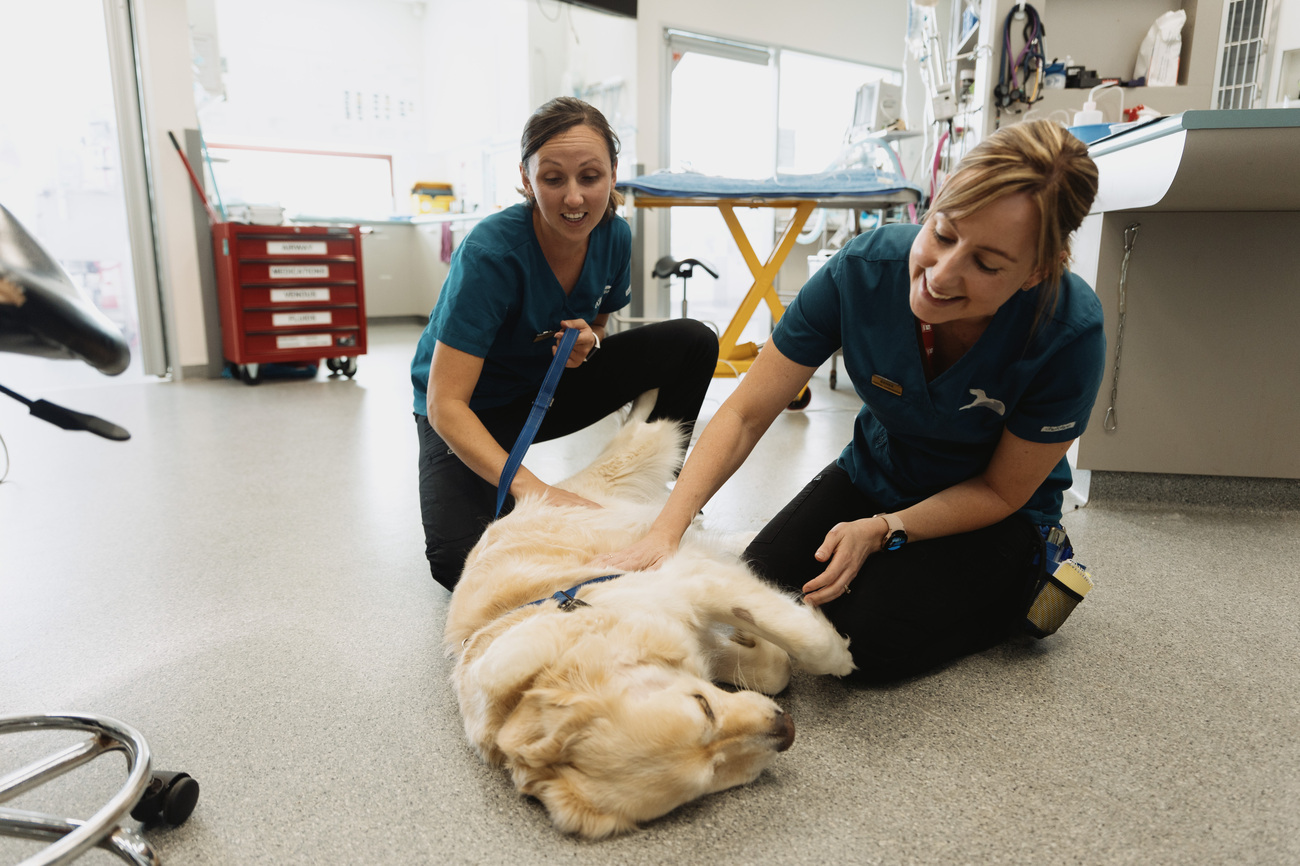 | | Soothing support for sore joints | | |
Arthritis affects many older dogs and cats, but doesn’t always cause the obvious limping or yelping symptoms that many pet owners might expect. Instead, pets with arthritis will often show more subtle signs of joint discomfort, such as a hesitance to jump or climb stairs, stiffness when rising from rest, or sensitivity to handling.
Whilst we, unfortunately, can’t cure arthritic joints, the good news is that there are lots of options to improve the mobility and comfort of affected pets - even those with other pre-existing health issues.
Pain relief
Depending on your pet’s general health, there is a variety of pain relief options that we may recommend, including non-steroidal anti-inflammatory drugs, corticosteroids, and other joint-protective, anti-inflammatory or alternative pain relief medications
For any older pet starting on long-term medication, it’s best for our vets to perform general blood tests first – this allows us to screen for any pre-existing medical issues which could make certain medications unsafe for use.
Joint health supplements
As well as prescription medications, our vets can also discuss the usage of pet-safe nutraceuticals, such as prescription diets or supplements containing high levels of omega-3 essential fatty acids for a natural anti-inflammatory effect.
General support
Lastly, there are some simple lifestyle changes that will help arthritic pets to navigate their environment more safely, easily and comfortably. These include:
- Maintenance of a healthy slim body condition
- Keeping your pet’s claws as short as possible
- The use of raised food and water bowls, non-slip matting and ramps
- The provision of extra-supportive, soft bedding
- Keeping your pet warm during the winter months with a warm sleeping location (and a coat for short-haired pets)
- In some cases, physical therapies such as hydrotherapy for low-impact muscle strengthening
So don’t just write off your pet’s reduced mobility as part and parcel of them “getting older” – have a chat with our knowledgeable vets about how we can help your old pet feel like a puppy or kitten again!
|
|
|
This email contains comments of a general nature only and is not intended to be a substitute for professional veterinary advice. It should not be relied on as the basis for whether you do or don't do anything.
All content © PetPack 2022 |
|
|
This email was sent to:
email@example.com
Gawler Animal Hospital
76 Adelaide Rd
Gawler South, SA 5118
|
|
|
|